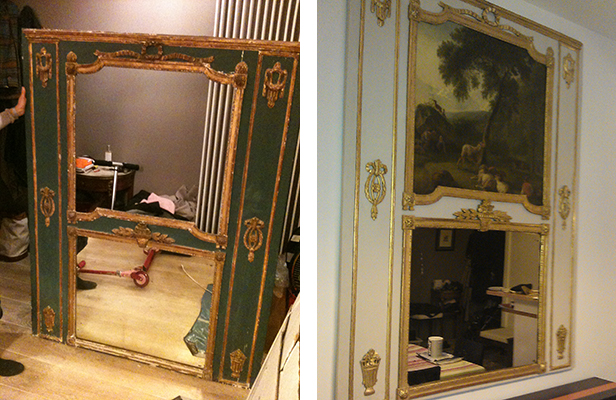Restoration
I use traditional gilding techniques to restore frames and objects.
Before starting a restoration project, every part of the piece brought in for restoration is analysed in order to define the appropriate treatment and procedure. The piece is cleaned to remove any dirt, dust, varnish or old paint. Damaged parts are rejoined and repaired. I always strive to preserve the original gilding.
Missing parts are recreated through either moulding or carving. Several layers of whiting or primer (a mixture of rabbit-skin glue and Blanc de Meudon) are applied to the new element. In order to refine details, it is often necessary to re-cut the gesso. Careful sanding leaves the resulting surface smooth as marble. The bole (a clay preparation that “sucks in” the gold leaf) is then brushed over the surface. The gold leaf can now be applied using either water gilding or oil gilding.
Water gilding, by far the most beautiful but also the most time-consuming technique, plays on the contrasts between matte and burnished finishes (the latter obtained by polishing the gold using an agate stone). Water gilding is used for indoor gilding.
Oil gilding, faster but less elegant than water gilding, can be used on many base materials besides wood. It is used for both indoor and outdoor gilding.
Creating a patina provides the final touch, reproducing the scars of time and merging old and restored parts into one visually coherent whole.
My experience and expertise allow me to advise on how to best restore and enhance the pieces I am entrusted with, while always striving to preserve the integrity of the original work.








